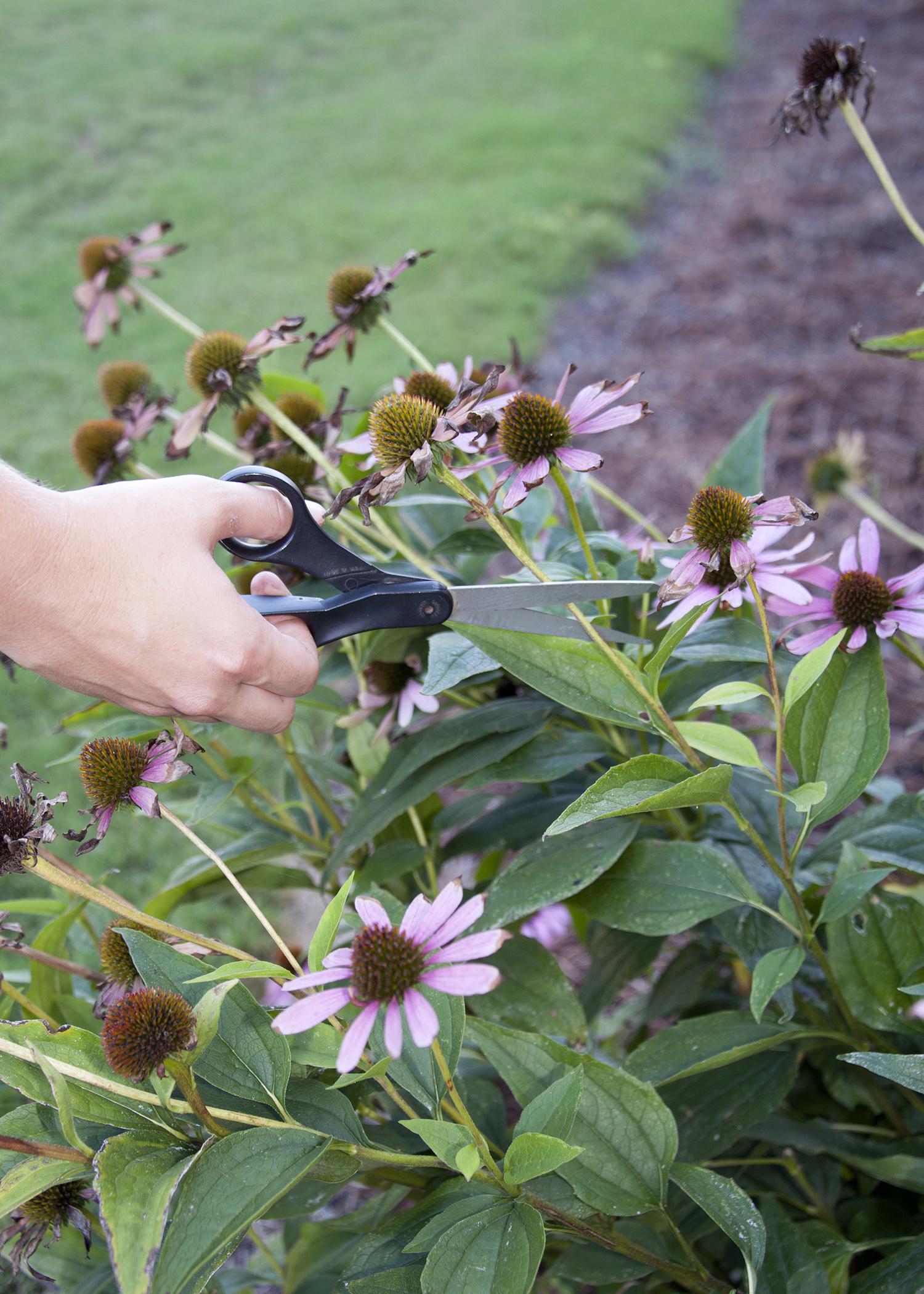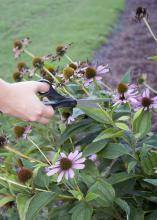Information Possibly Outdated
The information presented on this page was originally released on July 29, 2013. It may not be outdated, but please search our site for more current information. If you plan to quote or reference this information in a publication, please check with the Extension specialist or author before proceeding.
Removing spent flowers encourages more blooms
Gardens look beautiful when the flowers are in full bloom and there’s a profusion of color, but alert gardeners know this is the time to get the scissors ready.
It’s time to deadhead once the new has worn off and the flowers are past their prime and starting to dry up. This important garden maintenance activity simply refers to removing the spent flowers.
Deadheading flowering plants extends the bloom period, removes the seed source of species that could become weedy and maintains the health of flowering garden plants. It also improves the appearance of the plant by cleaning up the dead flower heads.
Many plants rebloom if existing flowers are removed. This is because in the life cycle of the plants, the ultimate goal is to produce seed for the next generation. If we interrupt that process, the plants will continue to try to complete their genetic programming.
Flowering plants are capable of producing a large seed bank containing hundreds or even thousands of seeds each year. If these seeds are allowed to germinate, you may find yourself with some unexpected consequences.
Many seedlings do not match the original plant because it took complex breeding to produce the mother plant. Also, these seedlings could crowd out the mother plant. Deadheading these species before the seeds are produced will alleviate unwanted seedling germination.
Plants other than those that bloom can benefit from deadheading. Remove the nonshowy flowers from plants like Coleus to allow the colorful foliage to shine.
You can increase the overall health of your flowering plants through deadheading. Seed production requires a tremendous amount of energy from the plant, so much so that the plant will sacrifice all vegetative growth to produce the next generation. By removing the spent flower heads, you can maintain it in a vegetative growth stage so the stems, leaves and root system will continue to grow.
How you should deadhead depends on the flowering characteristics of the plants themselves.
For plants with single flowers, such as Coreopsis or Echinacea, simply remove the spent flower stalk. You can increase bloom size by removing side flower buds from lateral growth so more energy is sent to the main flower. This also reduces seed production pressure later in the season or next year.
Use a different approach for flowering garden plants with clusters of flowers, such as Achillea and Verbena. These plants can be troublesome as all of the flowers do not mature at the same time and seeds are produced over a prolonged period. For these plants, remove flowers as they start to fade, and allow the plant to produce new clusters.
Some plants like Petunia produce flowers over the entire plant. Removing individual flowers would discourage even the most dedicated gardener, so simply shear the plant using snips or an electric trimmer. Be careful to remove just the faded flower heads.
There’s not a lot of finesse needed for this task, so get out there and deadhead. And if it helps to listen to a little Jerry Garcia, go for it.
The flower show for the rest of the summer and into the fall will be worth the effort you put into deadheading your blooms.








